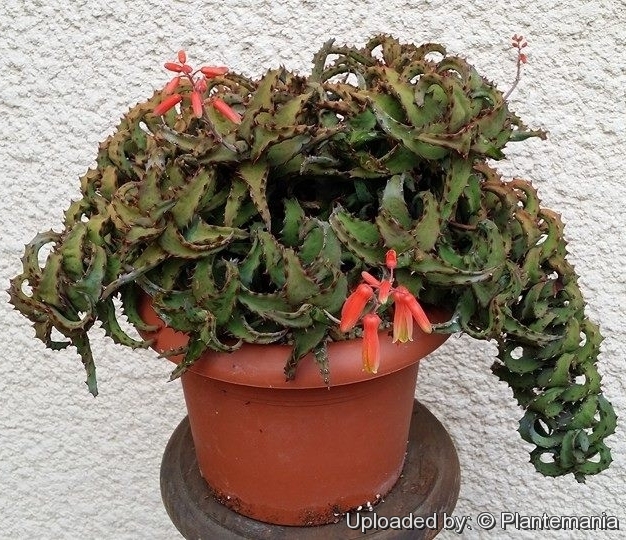
Aloe castilloniae Photo by: © Plantemania
Origin and Habitat: Plateau Mahafaly; Joffreville, south-west Madagascar
Altitude range: 100 to 250 meters above sea level.
Habitat and ecology: Aloe castilloniae is a cliff dwelling aloe that grows on porous calcareous sandstone. It forms almost vine-like drooping stacked rosettes that hang from cliffs and over boulders. Its stems are weak to attain any height and sprawls along the ground in large, branching colonies. It is very rare and after it description the original population has since not been rediscovered.
Synonyms:
Description: Aloe castilloniae is a low growing richly branched aloe species, forming large groups up to 1 meter in diameter. Its rarity and peculiar foliage make it a very marketable species
Stems: Branching from the base, almost vine-like, low-lying or hanging 40-180 cm long and about 1 cm thick, covered up to apex with dry leaves.
Leaves: 30-40 arranged in five lines in apical rosettes, strongly recurved, rigid, triangular. Blade blue-green or dull green, rough-textured, 6 cm long and 1.5 cm wide, scattered with 1-2 mm long red tubercles or teeth in both surfaces. Apex pointed, bearing 3 small spines. Margins with strong, deltoid, red teeth 2 mm long and 3-6 mm apart.
Inflorescences: Simple up to 6.5 cm long, bearing a loose cluster of two to nine flowers. Bracts about 2 long.
Flowers: Bright orange-red, about 23 mm long, slightly curved, held on a 8 mm long, pedicel. Tube 6 mm in diameter across the ovary, narrowed above to 4 mm and finally extendeding to 8 mm at the mouth. Outer tepals (almost) not fused together. Stamens and the style protruding1 about 3 mm from the flower.
Bibliography: Major references and further lectures
1) Gideon F. Smith, Colin C. Walker, Estrela Figueiredo “What’s in a name: epithets in Aloe L. (Asphodelaceae) and what to call the next new species.” In: Bradleya. 28: 89 2010
2) Jean-Bernard Castillon “Aloe castilloniae, un nouvel Aloe (Asphodelaceae) du Sud-Ouest Malgache.” In: Succulentes. Number 3, 21–24 2006
3) Susan Carter, John J. Lavranos, Leonard E. Newton, Colin C. Walker “Aloes. The definitive guide.” Kew Publishing, Royal Botanic Gardens, Kew 2011
4) Dave's Garden contributors. "PlantFiles: Aloe Aloe castilloniae" Dave's Garden. <http://davesgarden.com> Web. 23 Oct. 2014.
 Aloe castilloniae Photo by: © Plantemania
Aloe castilloniae Photo by: © Plantemania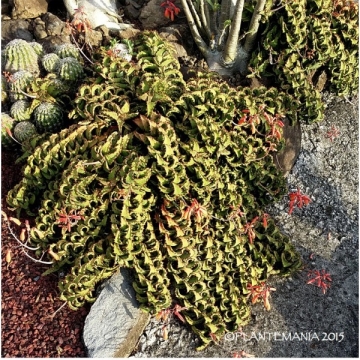 Aloe castilloniae Photo by: © Plantemania
Aloe castilloniae Photo by: © Plantemania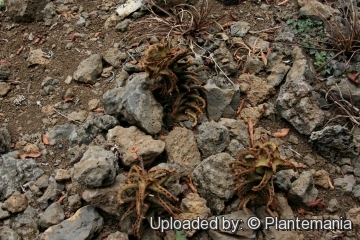 Aloe castilloniae Photo by: © Plantemania
Aloe castilloniae Photo by: © Plantemania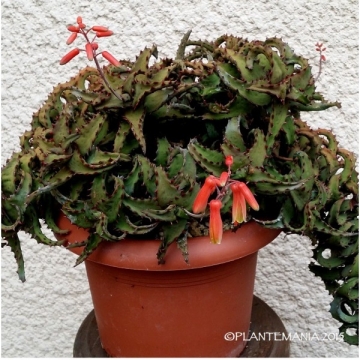 Aloe castilloniae Photo by: © Plantemania
Aloe castilloniae Photo by: © Plantemania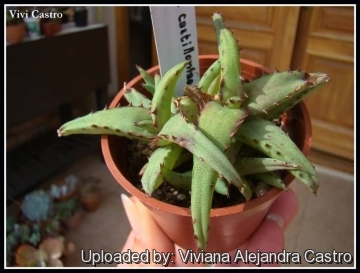 Aloe castilloniae Photo by: Viviana Alejandra Castro
Aloe castilloniae Photo by: Viviana Alejandra Castro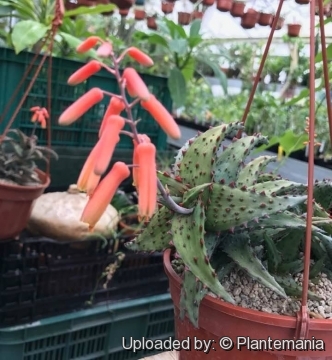 Aloe castilloniae Photo by: © Plantemania
Aloe castilloniae Photo by: © Plantemania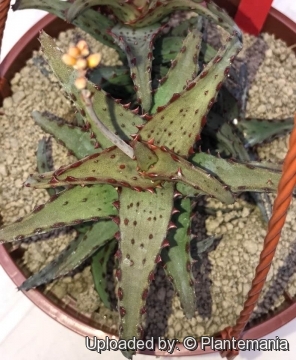 Aloe castillonae (spiny clone) Photo by: © Plantemania
Aloe castillonae (spiny clone) Photo by: © Plantemania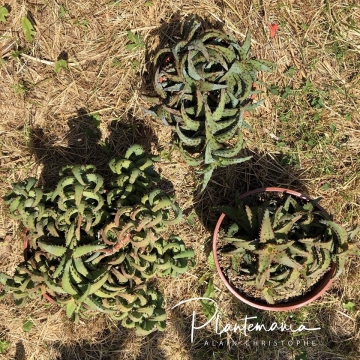 Aloe castilloniae Photo by: © Plantemania
Aloe castilloniae Photo by: © PlantemaniaCultivation and Propagation: Aloe castilloniaeSN|29329]]SN|29329]] is always an interesting plant and easy to grow in container or in the rock garden in warm areas. It is tough, sun and drought tolerant, but also will do well in partial-shade. The plants make active growth in fall/winter and propagate easily.
Soil: Porous soil with adequate drainage. Outdoors it does not prefer rich loamy soil; gritty dirt with pea gravel suits it.
Repotting: Repot Aloe castilloniaeSN|29329]]SN|29329]] only if you see roots coming out of the pot's drainage holes.
Fertilization: Feed them once a season with a water-soluble foliage houseplant fertilizer diluted to half strength. For outdoor plants, cut old stems back to ground level in the spring, and apply a small amount of general-purpose fertilizer. Water well to move the fertilizer down to the roots.
Watering: It takes little water & could rot if watered too often. During water thoroughly when soil is dry to the touch. It can take a great deal of drought, but seem to do better with regular (but moderated) watering and it is best to refrain from watering it until the rootball has dried out completely. During the winter months, plants are watered very little. Its succulent leaves will store enough water to survive for long time. For outdoor plants, additional watering is rarely needed, except during extended droughts.
Exposition: It need full sun to light shade with ample airflow, but a sunny spot is nicest, though in warmer climates it needs protection from too much sun because it is not very heat tolerant.
Frost Tolerance: Protect from frost. They are intolerant of frost.
Uses: Use them in rock gardens, dish gardens or as a ground cover for dry areas, especially on slopes.
Propagation: This is a tough plant which spreads easily by cuttings in summer. Remove a small piece of stem and left for a period of 2-3 days to callous. Then insert the end of the stem into a container filled with fast-draining potting soil. Water it well, then put the pot in a bright spot out of direct sunshine. Water it whenever the top inch of soil feels dry. In a few weeks it will develop healthy roots. It may also been reproduced by seeds.


















